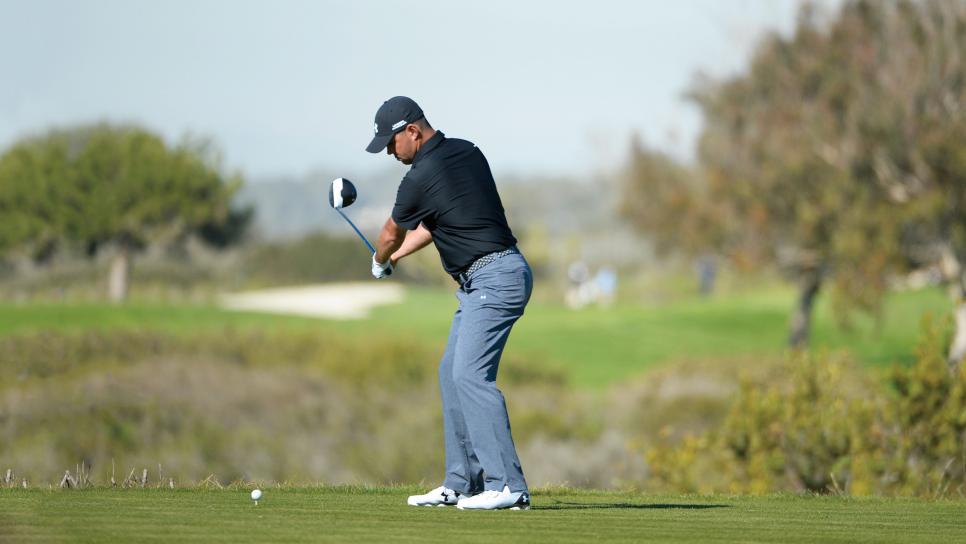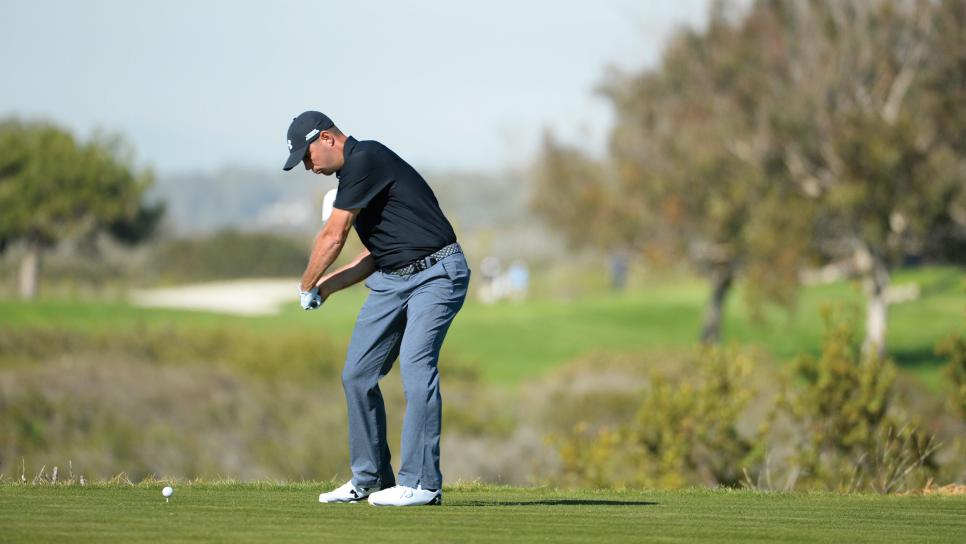So much of golf instruction is this position, that position, it's sometimes good to clear your head and think in broader terms.
Put simply, the overall motion of a good swing is push-pull: You push the club back, and you pull it through. The opposite move—a pull-push—is a common amateur fault. So a lot of golfers have the fundamental motion of the swing reversed. With the help of tour player Gary Woodland here, let's take a look. —With Peter Morrice
Move #1: The Pushback Takeaway

The motion you want off the ball is a pushing back movement by the left hand (pictured above). This creates a basically straight start to the swing and wide extension. It also gets the left shoulder turning back so the upper body starts to coil against a stable lower body.
The left hand is a good focal point because the hands are the only parts of the body on the club. In fact, think of the back of the left hand as the clubface: If the hand stays steady, so does the face. A square face going back boosts your chances of getting back to impact square, which is the ultimate goal.
Common Faults
A common fault is pulling the club back with the right hand. A lot of right-hand-dominant golfers do this, it causes the club moves quickly to the inside. From there, you have to lift it to get to the top, and that reduces body rotation and saps a lot of energy out of the swing. You lose all of that torque that's produced when the upper body turns against a stable lower body.
A Drill to Help
Here's a good drill to groove the push-back move. Grip a short iron in your left hand only, and make some chipping swings. Without the right hand on the club, you isolate the pushing motion of the left hand on the backswing. Re-create that feel when you go back to swinging with both hands.
Move #2: Pull Towards Lead Leg

Another benefit of the push-back is the wide takeaway that it creates. A wide takeaway helps shift your weight to your right side. With the weight back and your upper body fully coiled, you're ready to reverse those actions and start the downswing.
The first move down should be a pulling motion initiated by the left leg (pictured above). From the top, the left knee shifts toward the target and starts pulling the rest of the lower body into its forward rotation. If the lower body leads the downswing, the club drops to the inside, and you can sling it out to the ball.
There is a caveat. The downswing is not only a pulling action, because you also have to square the clubface for impact. If you just pulled, the face would be wide open—and you'd flare everything dead right. So after the initial pull, focus on turning the knuckles of your left hand down. Your goal is to get the back of that hand—the logo on your glove—facing the target at impact.
Common Faults
On the fault side, if you push the club down from the top, like a lot of right-hand-dominant golfers do, the club moves out and away from you. From there, you're going to make a steep swing that cuts across the ball from out to in. That swing has no power and produces a lot of pulls and slices.
A Drill to Help
Try this drill to help you feel the pull, then a square face. Without a club, take your setup with the outside of your left foot against a wall. Mimic your backswing, then swing down slowly. Make sure: (1) Your left leg gently bumps the wall as you start down, and (2) the back of your left hand faces the wall as it comes down in front of you. Now you're ready to put the push-pull to work for you.
Steve Scott is the head professional at Paramount Country Club in New City, N.Y.